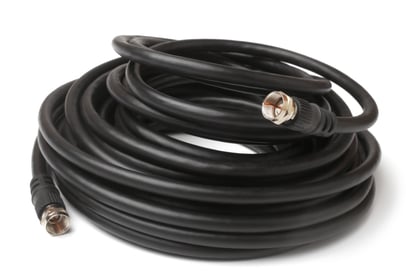Building a Profitable DOCSIS/HFC Network in 2022 to Extend Through 2035

Bill Halvorsen, a U.S. Marine Corps Veteran, has worked in the telecommunications industry for 32 years. Starting his career as a radio repairman, electronics technician, and data network specialist in the Marines, Bill was hired by Cisco Systems to deliver services to service providers around the globe. After 21 years at Cisco, Halvorsen was hired by CCI Systems to specialize in Broadband Access Architectures as a Solution Architect.
To be a profitable service provider in 2022, the majority of engineers and experts on the topic agree that fiber is the key. Plus, fiber is the most economical solution.
Within a greenfield network—where there is no existing infrastructure, the most economical decision is at the premise (i.e. office, home, apartment, condo, or 5G cell tower).
However, what makes the decision economical in an existing cable operation may not be rebuilding fiber to the premise. Instead, the better investment could be in the existing infrastructure or performing technology updates. These updates could be the difference between extending the network's profitability into the next decade, or only extending its life a few years.
Beyond the superficial facts that make rebuilding fiber to the premise sound like the easy choice, this is not always the best choice. Further, the rebuild scenario may not allow for a full recovery of the initial investment for a fiber overbuild of your network.
With recent announcements by Cisco on the End-of-Sale support of Cisco GS7000 nodes, Cisco PRISMA products, and Cisco Remote-PHY devices, it is worth thinking about HFC/DOCSIS innovation.
CCI Systems is qualified to answer the HFC/DOCSIS question because our experts have played an integral role in the rollout of this technology over the last 30 years. This expertise is supported by close partnerships with Calix, Nokia, ATX, Vecima, Harmonic, and others.
As experts on the subject, HFC/DOCSIS networks have several decades of profitability left under the hood.
To evaluate the best approach for your business, consider the age and condition of the current network/system, the potential impact of a third party overbuilder competing in a service provider’s service area(s), and what technological advances are available to the service provider.
Internet Speed History and Where It Is Going (1984-2034)
CLICK TO ENLARGE
PICTURE ABOVE: A capacity planning report gives unique access to a broad range of providers’ actual bandwidth needs and demand. By utilizing this type of reporting, CCI Systems has a track record of accuracy to determine the capacity needs of an operator.
Age and Condition of Existing Network Plant
The age and condition of the network plant are both a pro and con when figuring out what path you take on investing in infrastructure.
On average, Hybrid Fiber Coax (HFC) systems in North America are 15 to 30 years old, and the majority skew toward the older end of the spectrum. To justify Fiber to the Home (FTTH), cable systems are labeled as harder and more expensive to maintain, but more likely than not, the system of today is not what will be the system through 2035.
To make a pure economical choice for a provider, it takes proper analysis and data analytics to provide a panoptic view of the current network.
This includes:
- Deciding to rebuild with fiber or upgrade an existing HFC system to 1.2/1.8 GHz on the downstream and 85/204 MHz on the upstream. Reestablishing competitive offerings.
- Determining if the network is even capable of DOCSIS 4.0.
- Solidifying a date to perform an update or rebuild.
It’s important to note the speed and bandwidth capacity your network has available to offer will be dictated by the limitations of the physical plant design.
Ongoing Capacity Planning Report

An ongoing capacity planning report is an ongoing data analysis of capacity utilization of both the upstream and downstream bandwidth at the node, port, aggregate, and core of an operator’s network. This is a key analysis to provide insight into your next move or where to distribute funds for your next investment.
During the analysis, if the cable system is determined to be a profitable option for your business, the options available are provided with comparative costs.
For instance, if two-thirds of a FFTH build budget is allocated to the drop to the premise, it could be less costly to upgrade the existing node and distribution coax network. This leaves the drop and in-home connectivity alone.
Most network analyses intentionally bring fiber deeper. That’s part of the plan. But the most important consideration is how deep to upgrade the fiber and where to upgrade the cable system.
Typically, manufacturers provide product roadmaps to 1.8GHz components, which enable a provider to deliver 10 Gbps (or more) to the home or business.
To increase the efficiency of the bandwidth delivered and improve the maintenance of the plant, a service provider should remove active components and reduce the number of homes pass per service group. By rebuilding older plant, costly maintenance problems persisting in older systems will be eliminated. This will lower your company’s overall OpEx and bring it in line with the average cost of operating a fiber-only system.
The last mile infrastructure is a critical part of a strategy to maintain and grow profitability out of an HFC network. The other critical choice in making sound investments is making the technology selection that drives bandwidth to the Home/Business.

Competition: Third Party Overbuilder Competing in Your Service Area
Third party overbuilders tend to choose FTTH and Passive Optical Network (PON) because it’s considered greenfield in their book. The analysis those overbuilders perform to choose a market or region to go after is how many customers they can capture by offering something more than the incumbent provides.
To counter the overbuilder, the incumbent can match the new packages offered by the overbuilder, and most times, the overbuilder will not attempt the build. Without the assurance of capturing a certain quantity of subscribers, it’s a bad investment with a higher probability of a lower return.
One way service providers can be proactive against the emerging competition is by upgrading DOCSIS infrastructure to DOCSIS 3.1 and enabling it for DOCSIS 4.0. This will help to keep overbuilders out of your current service area and help your company stay profitable.
During a Fierce Telecom interview in May 2022, Michael Grau—CFO of Altice USA—said they “currently spend around $500 million on plant maintenance (or $600 million if you include Lightpath)”. He thinks they can reduce that figure by 50% if capacity upgrades on the HFC network are not performed.
Grau concluded: “I don’t see a path where we shut down the HFC network necessarily."
Securing a Long-Term Future by Embracing DOCSIS 4.0
This year, a catalyst that is driving design and capabilities seen in the DOCSIS equipment portfolio is a new set of Broadcom chips: BCM3229. For the DOCSIS gurus, the BCM3229 is a highly integrated DOCSIS® 3.1 CMTS MAC IC for use in DOCSIS 3.1 CMTS or CCAP products. Most, if not all, manufacturers are choosing to design their modules and nodes around these new control chips.
The Broadcom 3229 combined with the 316x chipsets will double the capacity of the single DOCSIS module inside a node and shrink its overall power consumption. This is made possible as the electronics get smaller, thus requiring less power, but supporting more capacity than previous technology.
The next HFC node cutout and install will be the last for service providers who create a plan for a profitable future.
For example, Service Provider A decided to go with DOCSIS 3.1 and 1 GHz system, including amps and taps. This would mean any upgrade afterward the fact would not require a field technician to cut out and splice in a new node or actives because it’s modular. Upgrading amps and taps to DOCSIS 4.0 and leveraging 1.8 GHz would be a module swap.
Let’s compare that to Service Provider B which chose to upgrade too late, and now, the company is faced with ongoing construction efforts and enduring long lead times. As delays persist, Service Provider B will continue to suffer on its bottom line. Discovering a two-pronged approach that was both technically feasible and financially feasible would have prevented this scenario.
If your company needs to understand the current capabilities of your network, find a consultant who can get you on a path toward 2035. 
CLICK TO ENLARGE
PICTURE ABOVE: CCI Reference Architecture of all things possible in a network.
Network Technology Advances and Service Provider Adoption
From 2022-2025, the service provider industry will see operators moving from Remote-PHY (CMTS + RPD Node) to Remote-MAC (CMTS in the node).
This transition is happening now for two reasons:
- Manufacturers have the compute resources and electronics within the node.
- Operators are benefiting from a more streamlined network design.
Consider this: IP to the furthest edge means a common network and architecture further out from the core. By expanding IP further to the edge, service providers have the luxury of more diverse approaches and hybrid approaches to offering services.
For instance, manufacturers offer PON and COAX from the same node housing. This allows several strategies to be viable, like capping the coax and extending the network with PON or dense wavelength-division multiplexing (DWDM), to extend fiber services for applications like 5G backhaul, business services, etc.
The management of these technologies is simplified onto a single pane of glass and provisioning backends.

Choosing the Right Technology for a Network
When it comes to choosing new technology, components, and equipment for your network, each choice can create a dilemma of its own without careful consideration.
Do you decide on an upgrade that is a regrettable spend with immediate buyer's remorse, or do you initiate an incremental spend toward better profitability and a bright future?
For example, when a service provider constructs a 30-year network, they must consider:
- the platforms the optical line terminal (OLT) optics reside in.
- if they will easily support 40G or 100G evolution.
- if the core network has a path to support 400, 800, and 1000 Gbps networks.
- if the back office has the framework to manage and provide customer assurance for the duration of the network's lifespan.
Life is all about choice, so make the right choices for your broadband network.
Finding the Right Consultant to Map Out a Future
Understanding new technologies, new products, and product roadmaps can be a challenge. Figuring out how they fit into end-to-end architectures can feel impossible. One day, every network will be fiber to the premise, but how you get there will determine how profitable and successful your company is.
Finding a consultant who understands the depth and breadth of the technologies, and who studies the state of your current infrastructure is important to maximize the profitability of and extend the life of your network. Remember, there is never just one choice or one option, so choose a consultant who lays everything on the table.
BNG to the Subscriber is how the experts at CCI Systems refer to fitting new technologies into the existing network architecture. Managing the decision-making process is done through the ACME methodology, which is defined as:
Assess
Service providers need real data and accurate analysis concerning the health of their current network. Through capacity analysis and predictive planning (see the Predictive Planning Report), the data can show feasible options for the provider.
Consult
Taking an authentic approach to architectures available through thorough analysis, reviewing the data gathered, and leveraging multiple manufacturers to optimize the network.
Model
Position the best approach, product selection, and timeline to achieve the optimal financial outcome for the client through mastery of the outside plant (OSP), DOCSIS, and IP network.
Execute
When it’s time to design, build, and deploy the new network architecture, help manage the duration of the project from fiber splicing to program management to staff augmentation.
CCI Systems helps guide clients through this process with candor and transparency. Our experts do not even blink when considering how to get clients to 2035.
After 65 years of analyzing, measuring, and comparing options for service providers, whittling the complexity down into a simple mission, driving fiber to the most economical point, and extending a network’s profitability is where CCI excels.
Interested in putting together the right plan for your network? Learn how a Predictive Planning Report can set you up for success.


